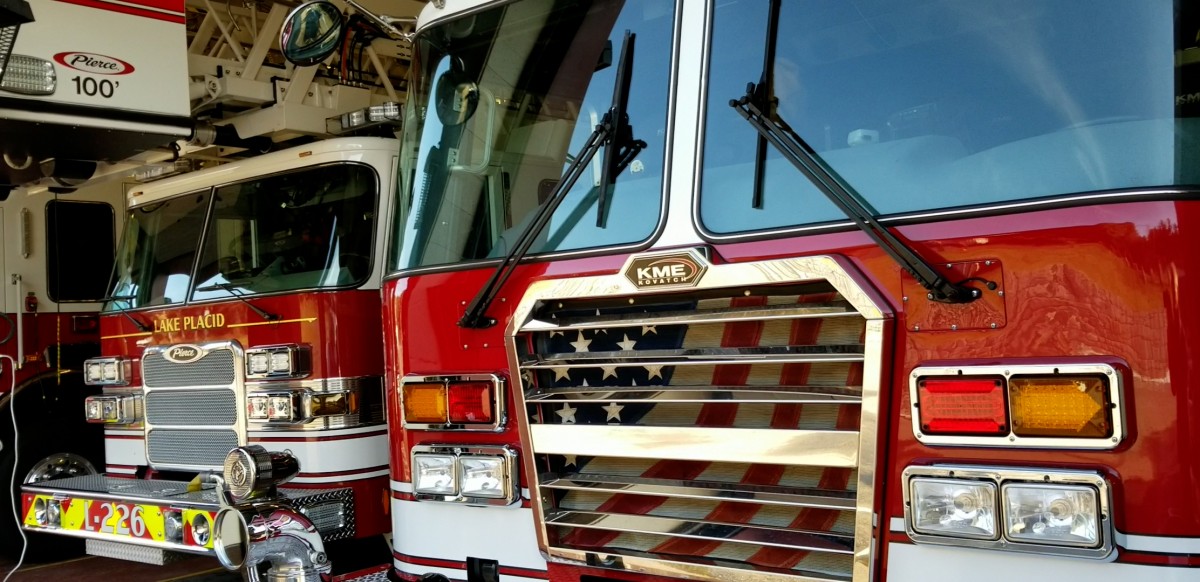A home fire can quickly turn your festive time of year into a devastating one.
The American Red Cross reports that nearly 47,000 fires occur during the winter holiday period. The National Fire Protection Association (NFPA) notes that between 2013-2017, U.S. fire departments responded to an average of 160 home fires that started with Christmas trees per year.
“The biggest cause of holiday fires for us are the Christmas trees. We get concerned about the trees and their decorations,” remarks Lake Placid Volunteer Fire Department Chief Torry Hoffman. ”I think with Christmas trees, the lights are always a concern no matter what kind of tree it is.”
Torry has some tips to keep your holiday safe and filled with celebration.
KEEP YOUR TREE WATERED:
You should water your tree at least once a day. TheSpruce.com suggests that when you bring your tree home boil one gallon of water, then dissolve one cup of sugar in the water and let it cool. Continue to add fresh, cool plain water to the tree stand to ensure that it does not dry out.
Torry says that as long as trees are watered, they can last for about five weeks. As soon as they begin to dry out, they should be taken down as they become more susceptible to catch fire.
NEVER THROW WRAPPING PAPER INTO THE FIREPLACE OR WOODSTOVE:
While tossing a couple of wadded up balls of wrapping paper into your fireplace or stove may seem harmless enough, it can actually result in a serious chimney fire.
Torry notes that the paper is very light when it burns and can get caught in the flue and cause a chimney fire.
TURN OFF YOUR LIGHTS WHEN YOU ARE NOT HOME & BEFORE GOING TO BED:
Make sure to turn off your Christmas lights when you are not home and before you go to bed at night. From the same 2013-2017 NFPA survey, lighting equipment was involved in more than two of every five home Christmas tree fires.
“You should really only have your Christmas lights on when you are home, it does not really make sense to have them on when you are not there,” Torry adds. “Like anything else, you do not want to leave a candle burning when you are not home so you might as well not have the Christmas lights burning when you are not home.”
FOLLOW THE MANUFACTURER’S RECOMMENDATIONS:
Simply put; outdoor lights and power cords are made to be used for the outdoors, while indoor lights and power cords are designed for indoor use.
Torry adds, “With Christmas light, you should always check the ratings and what the manufacturer recommends what they should be used for. Outdoor lights burn hot, usually because they are sealed better, so be careful where you use them.”
He goes on to say, “The same thing goes for power strips. You need to make sure that you don’t overload them and interior power strips are not sealed like exterior ones, so you should make sure that if you are using a power strip it is rated for the outside.”
USE THE OCCASION TO TEST YOUR SMOKE & FIRE DETECTORS:
Before the family and friends come over to celebrate the season with you, take a moment to check your smoke and fire detectors and change out the batteries if needed.
Torry remarks that the holiday season is a good time to do that and to go over an escape plan with the family. All smoke and fire detectors should be in working order, as well as carbon monoxide detectors.
IN CASE OF FIRE GET OUT:
“There is nothing in there that is worth your life or anyone else’s life,” says Torry.
In case of fire, get out of the house, make sure everyone is out safely and call 9-1-1. Do not go back into the house for any reason.








